Extract from The Guardian
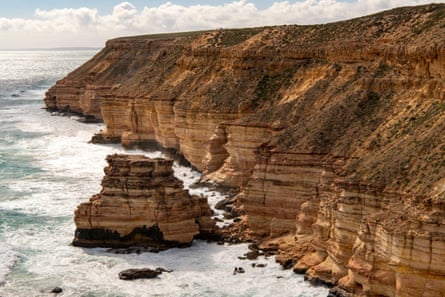
The remote Western Australian town of Kalbarri could find itself at the bleeding edge of a renewables revolution
Last modified on Thu 27 Aug 2020 04.41 AEST
Brandon Bickford is only in town for the weekend. The 26-year-old has come back home to Kalbarri, the tiny Western Australian town where he grew up, with his fiancée to visit family. He’ll be making the 574km drive back south to Perth on Monday morning.
The young man with an athletic build says growing up here was like living in the flipside of a postcard. In his teenage years he “ran amok” between the ancient cliffs that hug the coast and the rugged natural landscape that stretches out to the horizon.
“To
this day, I say moving to Kalbarri was the best thing mum ever did for
me,” Bickford says. “I learned a lot, not just from school but just from
being outdoors.”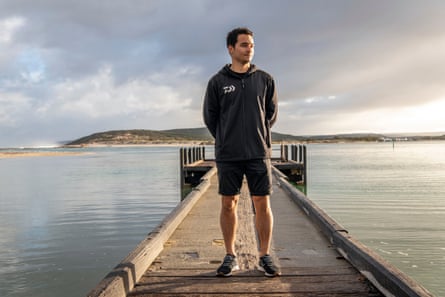
It wasn’t long after graduating high school that he left. Kalbarri has a population of just 1,500. It might be beautiful, but there’s no work. For a while Bickford picked up a job on a commercial fishing boat, and then another on an egg farm.
But when he landed a gig on an iron ore mine outside of Geraldton eight years ago, he did like so many others and moved away.
“It sucked moving away,” Bickford says. “But it’s the norm here. There’s a handful of jobs and if you want to do something else, if you want to build a future for yourself, you’ve got to leave.”
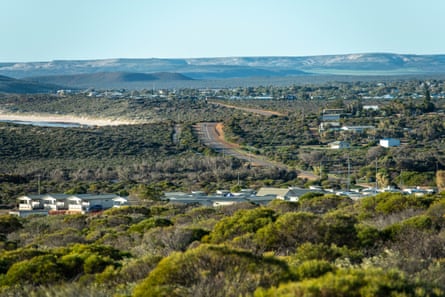
Hydrogen goes green
“The idea is to become a low-cost producer of green, renewable hydrogen,” says Terry Kallis, one of the project’s promoters.
Like solar and wind power, the technology to make “green” hydrogen from water has been around since the 1970s.
Historically the production of hydrogen relied on fossil fuels to make “brown” or “blue” hydrogen by running an electric current through water using an electrolyser – a device that breaks down water into oxygen and hydrogen.
But
today the development of renewable energy has advanced enough that coal
or natural gas are no longer needed to create the electric current. The
entire process can instead be powered by wind and solar – making green
hydrogen possible.
For years, technological development in the sector stalled due to a lack of demand, but that is changing rapidly. Each year the world consumes 70m tonnes of hydrogen to make glass, steel and fertiliser. That figure is projected to grow to 90m tonnes by 2050 under the more conservative scenarios.
Kallis and his business partner, Peter Sgardelis, have a background in large-scale renewables. Kallis was involved in the construction of the first commercial windfarm in South Australia and Sgardelis worked on the Star of the South offshore windfarm in Victoria.
This experience – along with the growing global interest in renewable hydrogen – has helped attract support from German multinational engineering giant Siemens, which in October last year signed up to build the electrolysers for the project.
“We’ve seen the costs associated with production of green hydrogen coming down, or coming down sooner than expected,” Kallis says. “We’ve also seen the development of the electrolyser to commercial scale and people start talking about demand. That has been a missing link.”
The area around Kalbarri – the traditional land of the Nanda people with whom they are currently negotiating a land use agreement – is an obvious choice, he says.
The landscape offers the
right type of wind, good exposure to sun, and is close to both ocean and
the Dampier-to-Bunbury pipeline – the longest gas pipeline in
Australia.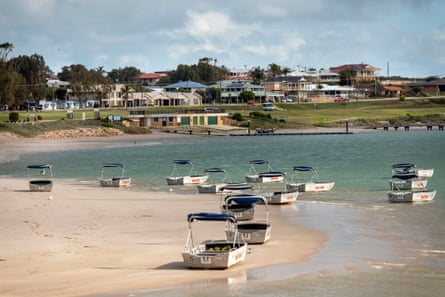
Since the project is being developed in stages, the earliest phases will see hydrogen blended into the liquid natural gas supply before it then pivots to focus on export.
Like any ambitious project that pushes the boundaries of technological and industrial development, it is not without problems to solve.
While the process of making hydrogen from water is well understood, until recently the electrolysers required for the process have not been large and efficient enough to produce in commercial quantities.
The other issue has been transport.
Moving hydrogen offshore currently requires the gas to be packaged up in ammonia, or cooled 250C below freezing until it forms a liquid that can then be pumped out onto a ship like LNG.
“Those details have yet to be determined, as it will depend on what the buyer wants,” Kallis says. “We’re under no illusions and we make clear this is a very large project, something that will be developed in stages over time.”
Should they succeed, they will be helping to pioneer what may be a whole new industry for Australia.
Enormous economic potential
Many believe hydrogen could play a role in turning Australia into the Saudi Arabia of renewable energy.
“Countries such as Japan, Korea and Germany have already come to Australia, asking for us to export renewable hydrogen for their domestic energy consumption,” says Ken Baldwin, the director of the Energy Change Institute at the Australian National University. “We have enormous opportunities … [to create wealth and] jobs due to the demand for our energy from these countries.”
In November last year, the CSIRO released the National Hydrogen Roadmap to plan out how an export industry could be developed. The potential to get in on the ground floor of a future industry has the private sector excited, with a flurry of 30 new proposals for renewable hydrogen projects in Western Australia alone.
Alongside that proposed for Kalbarri, these include other large operations such as the monster 15,000 megawatt hydrogen project being developed in the Pilbara as part of the Asian Renewable Energy Hub.
There are also a series of smaller operations – not all geared for export – including Yara Pilbara’s hydrogen fertiliser plant and Hazer’s $17m partnership with the Water Corporation to make hydrogen and high-quality graphite from biogas at a wastewater treatment plant in Woodman Point.
It is here that some organisations such as the Grattan Institute have spied an even bigger opportunity.
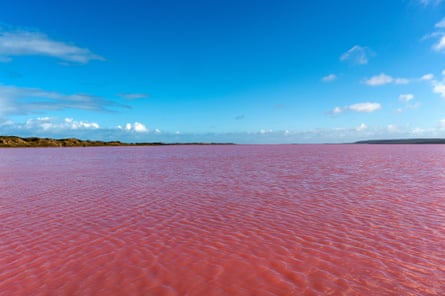
In a report released in May, the independent thinktank suggested that instead of focusing on exporting renewable hydrogen as fuel, using it to make green steel may prove easier – and more beneficial.
Given that steel production makes up 7% of global carbon emissions, Guy Dundas, an economist and co-author of the Grattan Institute study, says demand will inevitably grow for green steel as countries move to decarbonise.
“The idea for us was that hydrogen is a very tricky product to export. So you’d instead use the hydrogen to make the steel and then export the steel overseas,” Dundas says.
“Our estimate was that it would take $500m in government investment to get that going. We made the case that for green steel, that would be worth it in the long run.”
For its part, the Western Australian state government has needed little convincing.
“[Hydrogen’s] come from being a bunch of nerds in white coats stuck in the back blocks of a multinational tower, to where the hydrogen guys have been moved a few floors higher,” Alannah MacTiernan says. “It’s really exciting.”
As minister assisting the minister for state development, jobs and trade, MacTiernan says things are moving so fast the state government is looking at bringing its development plans forward.
“We can either send our energy overseas just as hydrogen, or as elaborately transformed products,” she says. “If we can produce green hydrogen or green steel, we think we can get a better balance for a transformed economy in dealing with climate change.
“We want to be having proper scale blending [of hydrogen into LNG pipelines] in the next two years. We’re thinking exports in the next four years. Large-scale exports in the next seven years. And hopefully, the big dream – if we can pull it off – is green steel in a decade’s time.”

True to this vision, the state government has targeted hydrogen for investment as part of its economic response to the pandemic.
When the Western Australian premier, Mark McGowan, announced his Covid-19 recovery plan in mid-July, it specifically set aside $10m for renewable hydrogen.
While this will do good in the long term, the ambitions of ministers and investors is still measured in months and years for those on the ground in places like Kalbarri.
A future in Kalbarri
Garry Keeffe, the CEO of the local shire of Northampton, says its biggest benefit will be stable work in a place where the last Australian Bureau of Statistics census put the average age at 51.
Promoters say it will bring around 2,500 jobs at the peak of the construction phase and 700 permanent positions to run it – a prospect Keeffe welcomes.
“It’s a great project, no doubt about that,” he says. “If they can develop it to the stage they want, that’s fantastic. But then that’s about 10 years away. That’s where we have to be careful. The technology for the project is still not there yet.”
For his part, Bickford says that as long as Kalbarri doesn’t lose its soul along the way, he sees a better future for the town – although one he may not be able to participate in.
Since moving away he has made another life for himself. He and his fiancée, Angela, are expecting a daughter in December and live in the suburbs outside Perth, close to her family.
Bickford has no plans to move back home in the future with or without the plant – although he’s quick to say that’s not really the point.

Those who are going to benefit most are those kids coming up now, he says. Whatever they decide to do with their life after school – stay or go – at the very least it will give them a meaningful choice about their future.
“Those kids will have direction. I mean, it’s not just one job you’re going to be working at the plant, there’s a range. Engineers. Operators. Even just the construction will mean you can get a trade.
“You could get a whole life out of it, if you wanted it.”
The coronavirus pandemic has devastated the economy but also presented a unique opportunity: to invest in climate action that creates jobs and stimulates investment, before it’s too late. The Green Recovery features talk to people on the frontline of Australia’s potential green recovery.
No comments:
Post a Comment